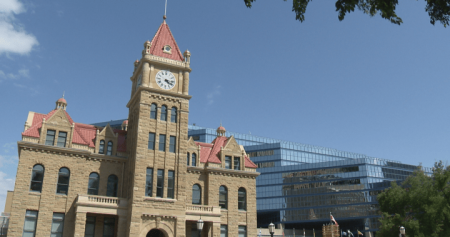The current dispute between Quebec and Ottawa regarding immigration is primarily driven by political motivations rather than real labor market needs, according to Karl Blackburn, president of the Conseil du patronat du Québec. Quebec Premier François Legault has threatened to hold a “referendum” on immigration if the federal government does not act quickly to address the increasing number of temporary immigrants in the province, including foreign workers, international students, and refugee claimants. The province is calling for stronger French-language requirements in federal immigration programs and a reduction in asylum seekers and temporary workers. While Prime Minister Justin Trudeau has rejected Quebec’s request for full control over immigration, Legault has indicated that Trudeau is open to some of the province’s demands, particularly reducing temporary immigrants.
Blackburn argues that the number of temporary workers in Quebec reflects the needs of the labor market and an aging society. He supports the call to reduce asylum seekers in the province, as Quebec has received a disproportionate share in recent years. However, he criticizes the federal government’s decision to reimpose visas on some Mexican nationals earlier this year, as it limits businesses’ ability to bring in workers. Blackburn warns that reducing the number of temporary workers will negatively impact Quebec’s economy and consumers who rely on goods and services provided by these workers.
The ongoing debate between Quebec and Ottawa intensified earlier this year when the premier raised concerns about the influx of asylum seekers entering the province. Quebec has demanded $1 billion in reimbursement from Ottawa for the costs associated with caring for asylum seekers over the last three years. While Federal Immigration Minister Marc Miller acknowledges that no country would give up complete control over immigration, he notes that he and his provincial counterpart are in agreement on various issues, including limiting visas for Mexicans and protecting French.
The surge in temporary immigrants in Quebec can be attributed to several factors, including a tight labor market, international recruitment by post-secondary institutions, and programs introduced by both the federal and provincial governments to facilitate the entry of more workers. Emna Braham, a researcher who recently studied temporary immigrants, highlights that the high numbers were unforeseen due to a lack of coordination between various immigration programs. Both Braham and Blackburn point out that Quebec’s decision to limit the number of permanent residents accepted each year has led to a bottleneck of individuals waiting for permanent status, forcing the province to rely heavily on temporary workers to meet labor demands.
Braham and Blackburn advocate for a coordinated approach to immigration between provinces and the federal government to ensure both short-term and long-term needs are met. They assert that a systemic review is necessary to assess the cumulative impact of individual immigration measures and address the current challenges facing Quebec’s labor market. Ultimately, they emphasize the importance of aligning immigration policies with economic growth and labor market requirements rather than political considerations.
In conclusion, the dispute between Quebec and Ottawa over immigration highlights the need for a balanced approach that considers the economic realities of the labor market while addressing social and political concerns. The current focus on reducing temporary workers may have unintended consequences for Quebec’s economy and essential services. Collaboration between federal and provincial governments is essential to develop a comprehensive immigration framework that meets the diverse needs of both immigrants and host communities.













